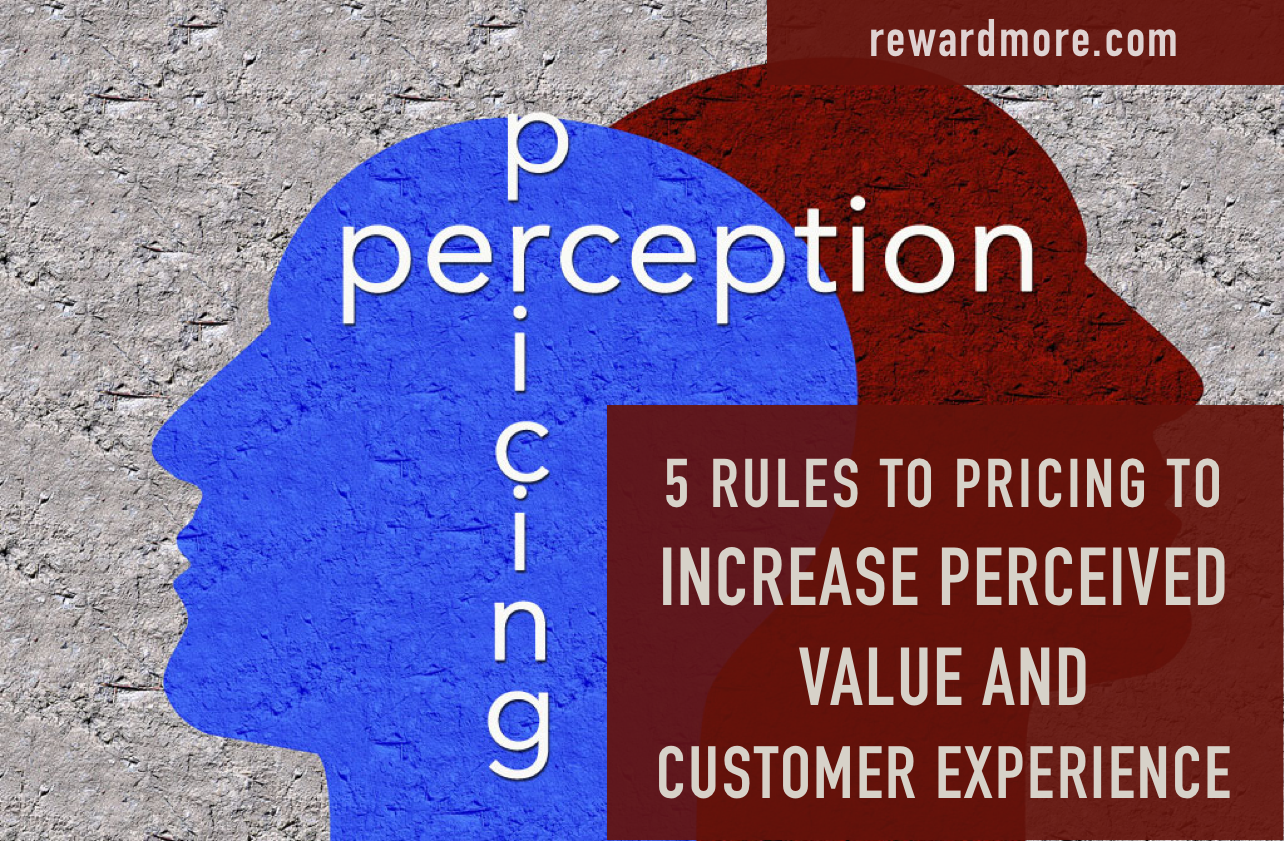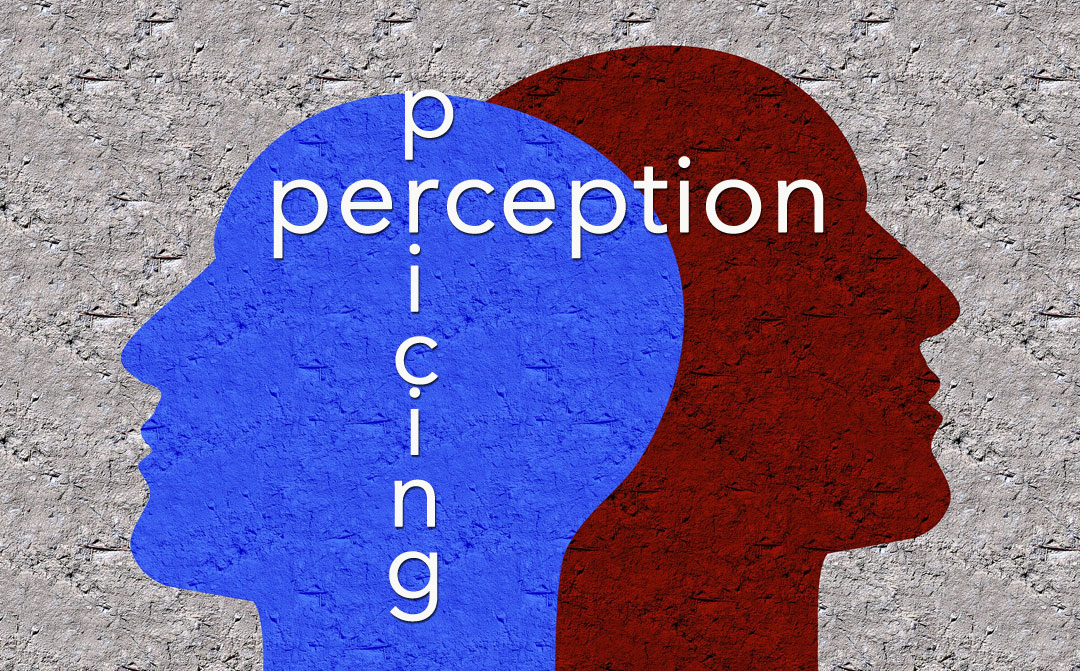5 Rules of Pricing to Increase Perceived Value and Customer Experience

As people, we like to think that we are rational and that our perception of value is logical, but this couldn’t be further from the truth. Research has shown that perception of value is relative and that a business can influence perception of value through pricing. Learn 5 simple pricing techniques to increase perceived value and improve customer experience.

There are many different customer acquisition strategies, but one of the lesser known ways is through pricing. When pricing is set according to how people take in information, it can be a valuable small business support asset and drive an increase in customer acquisition. What is even more fascinating is that mere pricing can actually improve customer experience itself. Read on to discover these effective rules to pricing to get the highest perceived value possible.
Rule 1: Charm Pricing
Charm pricing is most notably known as “9s” pricing and is widely used, but not widely understood. Research has shown us that people will buy more of something if the price ends in a 9, but the real reason is a bit more complicated.
If a price is reduced from $180 to $179, although the price ends in 9, it doesn’t convert to many more buyers. If, however, the price is reduced from $200 to $199 the buyer conversion is significantly higher. The reason isn’t necessarily that the price ends in 9, but that the first number they see is lower. Dropping from $180 to $179 leaves the 1 on the left intact, but dropping from $200 to $199 reduces the 2 to a 1 and is perceived as significantly less. We read left to right, so lowering the left-most digit creates a higher perceived value.
Rule 2: Reference Pricing
Reference pricing is one of the most common techniques to increase the perceived value of the price for something. Reference pricing is using a larger number to make the price seem relatively smaller. It is important to note that the reference number does not need to be a dollar amount. It can be any number that is larger, like the model year or number of people who have bought.
A common example of reference pricing is called anchor pricing. Anchor pricing is using a higher initial price to give a greater perceived value to the lower actual price. When comparing the actual price to the anchor price, the perception of value is more than when seeing the actual price by itself. This tactic is commonly used in negotiation. An interesting note is that the anchor price should be exact (e.g., $205, not $200) as round numbers used as anchors lead people to believe the number is made up and, therefore, breaks the psychology of the rule.
Another example of reference pricing is descending pricing. Descending pricing lists prices starting from the most expensive down or right to the least expensive. The psychology of this pricing tactic is similar to anchor pricing, but is less obvious. The larger first number causes the following lower numbers to be perceived at a better value.
One way to make this rule work for a retail service business is to artificially inflate services that have lower returns and place them on top. Then the services that have higher ROI can be listed after with lower prices and convert more buyers.
Rule 3: Price Placement
Price placement is very important in creating value for an item. Knowing how the value is perceived will direct where the price should be seen. In retail service businesses, the services are considered self-care and are emotional purchases.
For emotional purchases, it is important to list the service before the price. If they see the service first, they will emotionally connect to it. Then they will look at the price to see if they can justify it. By emotionally connecting to the service, they are likely to see the price as less of a barrier. Do note that a rational purchase is different than an emotional purchase and that the price should come first for these items.
Rule 4: Factors of Pricing
Factor pricing is not as commonly used as the previous rules but is powerful nonetheless. It is using numbers that are factors of the price to create a sense of ease in the buyer. For instance, a package of 2, 60-minute massages for $120 is a good example of factor pricing. The 2 and 60 multiply to equal 120 and this balance is comforting to the buyer which creates trust and translates into more purchases.
This rule is an excellent example of how we are subconsciously influenced into our perception of pricing and value. As children we are all taught arithmetic relentlessly until it became so embedded in our subconscious that it later influences our perception of numbers. Although factor pricing is not a strong influencer, it can be used to help someone feel comfortable with purchasing a package over a single service.
Rule 5: Payment Before Receiving Service
While most service-based businesses take money after the services are rendered, this rule is a compelling reason to take it prior to receiving the services. This rule actually has less to do with the perception of pricing than it does the perception of the service. It is based on the fact that, once invested, a person is psychologically predisposed to protect their investment.
If a person makes payment before using the service, they will look for the value in the service and the service will be perceived with greater satisfaction. Their experience will be filtered through the perception that they have already paid and should make the most out of it.
If the client pays following the rendering of the service, it goes the other way. When it comes time to pay, there is a tendency to look back at the service to see if it was worth it. All things equal, this has a negative impact on the perception of the service as it relates to the pricing.
The psychological effect of pricing is beyond fascinating, it is an effective customer acquisition strategy that can increasing the perceived value of your offering. When considering the prices of your services, factor these 5 rules into your pricing and customer experience strategy to help your small business achieve greater success.





0 Comments